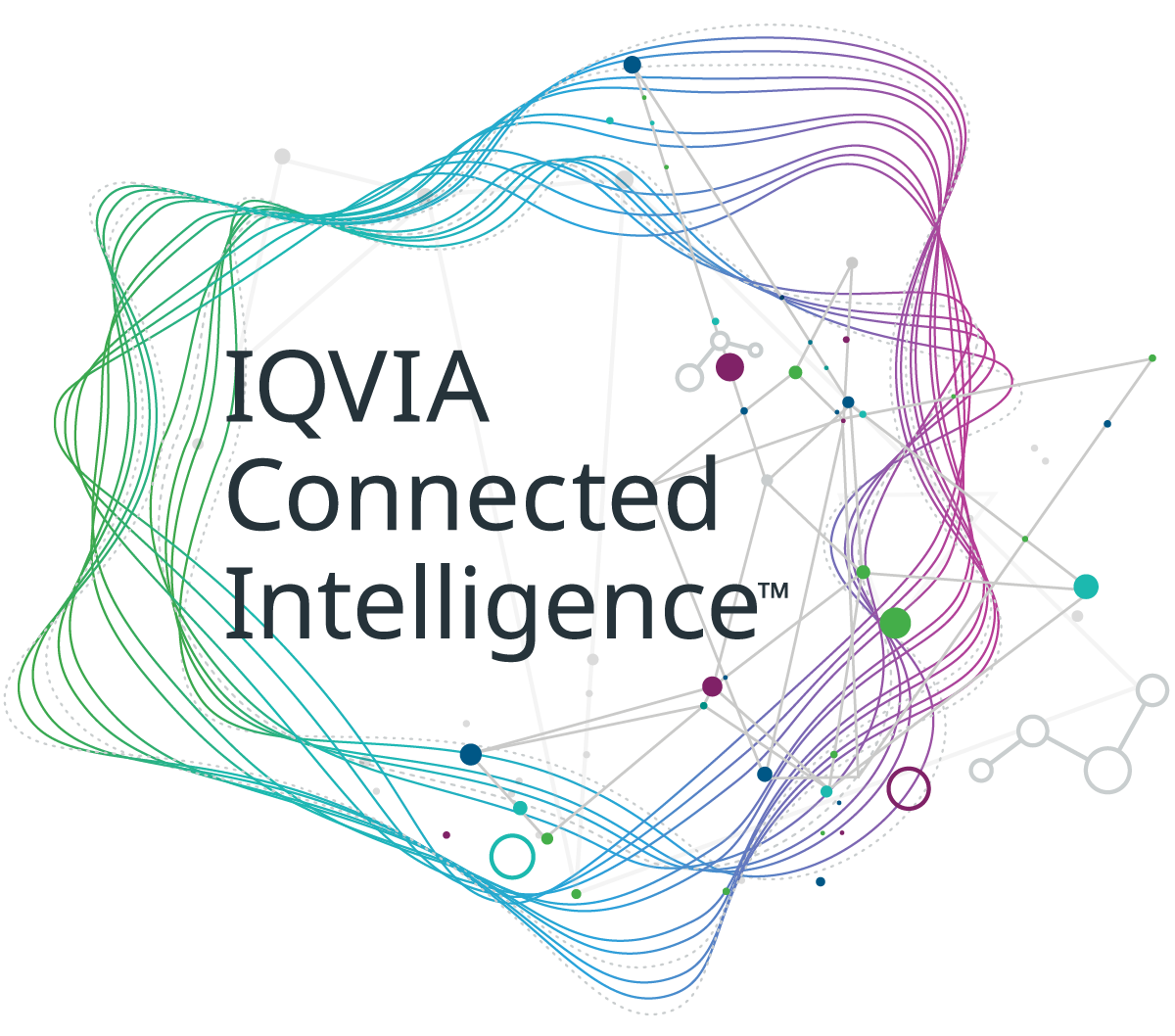-
Americas
-
Asia & Oceania
-
A-I
J-Z

EMEA Thought Leadership
Developing IQVIA’s positions on key trends in the pharma and life sciences industries, with a focus on EMEA.
Learn more -
Middle East & Africa

EMEA Thought Leadership
Developing IQVIA’s positions on key trends in the pharma and life sciences industries, with a focus on EMEA.
Learn more
Regions
-
Americas
-
Asia & Oceania
-
Europe
-
Middle East & Africa
-
Americas
-
Asia & Oceania
-
Europe
Europe
- Adriatic
- Belgium
- Bulgaria
- Czech Republic
- Deutschland
- España
- France
- Greece
- Hungary
- Ireland
- Israel
- Italia

EMEA Thought Leadership
Developing IQVIA’s positions on key trends in the pharma and life sciences industries, with a focus on EMEA.
Learn more -
Middle East & Africa

EMEA Thought Leadership
Developing IQVIA’s positions on key trends in the pharma and life sciences industries, with a focus on EMEA.
Learn more
SOLUTIONS
-
Research & Development
-
Real World Evidence
-
Commercialization
-
Safety & Regulatory Compliance
-
Technologies
LIFE SCIENCE SEGMENTS
HEALTHCARE SEGMENTS
- Information Partner Services
- Financial Institutions
- Global Health
- Government
- Patient Associations
- Payers
- Providers
THERAPEUTIC AREAS
- Cardiovascular
- Cell and Gene Therapy
- Central Nervous System
- GI & Hepatology
- Infectious Diseases and Vaccines
- Oncology
- Pediatrics
- Rare Diseases
- View All

Impacting People's Lives
"We strive to help improve outcomes and create a healthier, more sustainable world for people everywhere.
LEARN MORE
Harness the power to transform clinical development
Reimagine clinical development by intelligently connecting data, technology, and analytics to optimize your trials. The result? Faster decision making and reduced risk so you can deliver life-changing therapies faster.
Research & Development OverviewResearch & Development Quick Links

Real World Evidence. Real Confidence. Real Results.
Generate and disseminate evidence that answers crucial clinical, regulatory and commercial questions, enabling you to drive smarter decisions and meet your stakeholder needs with confidence.
REAL WORLD EVIDENCE OVERVIEWReal World Evidence Quick Links

See markets more clearly. Opportunities more often.
Elevate commercial models with precision and speed using AI-driven analytics and technology that illuminate hidden insights in data.
COMMERCIALIZATION OVERVIEWCommercialization Quick Links

Service driven. Tech-enabled. Integrated compliance.
Orchestrate your success across the complete compliance lifecycle with best-in-class services and solutions for safety, regulatory, quality and medical information.
COMPLIANCE OVERVIEWSafety & Regulatory Compliance Quick Links

Intelligence that transforms life sciences end-to-end.
When your destination is a healthier world, making intelligent connections between data, technology, and services is your roadmap.
TECHNOLOGIES OVERVIEWTechnology Quick Links
CLINICAL PRODUCTS
COMMERCIAL PRODUCTS
COMPLIANCE, SAFETY, REG PRODUCTS
BLOGS, WHITE PAPERS & CASE STUDIES
Explore our library of insights, thought leadership, and the latest topics & trends in healthcare.
DISCOVER INSIGHTSTHE IQVIA INSTITUTE
An in-depth exploration of the global healthcare ecosystem with timely research, insightful analysis, and scientific expertise.
SEE LATEST REPORTSFEATURED INNOVATIONS
-
IQVIA Connected Intelligence™
-
IQVIA Healthcare-grade AI™
-
IQVIA AI Assistant
-
Human Data Science Cloud
-
IQVIA Innovation Hub
-
Decentralized Trials
-
Patient Experience Solutions with Apple devices
WHO WE ARE
- Our Story
- Our Impact
- Commitment to Global Health
- Code of Conduct
- Sustainability
- Privacy
- Executive Team
NEWS & RESOURCES

Unlock your potential to drive healthcare forward
By making intelligent connections between your needs, our capabilities, and the healthcare ecosystem, we can help you be more agile, accelerate results, and improve patient outcomes.
LEARN MORE
IQVIA AI is Healthcare-grade AI
Building on a rich history of developing AI for healthcare, IQVIA AI connects the right data, technology, and expertise to address the unique needs of healthcare. It's what we call Healthcare-grade AI.
LEARN MORE
Meet the IQVIA AI Assistant
Your new expert analyst is here. Be at the forefront of data-driven decision-making with a new generative AI tool that enables you to interact with our products and solutions like never before. Get results you can trust, faster.
LEARN MORE
Your healthcare data deserves more than just a cloud.
The IQVIA Human Data Science Cloud is our unique capability designed to enable healthcare-grade analytics, tools, and data management solutions to deliver fit-for-purpose global data at scale.
LEARN MORE
Innovations make an impact when bold ideas meet powerful partnerships
The IQVIA Innovation Hub connects start-ups with the extensive IQVIA network of assets, resources, clients, and partners. Together, we can help lead the future of healthcare with the extensive IQVIA network of assets, resources, clients, and partners.
LEARN MORE
Proven, faster DCT solutions
IQVIA Decentralized Trials deliver purpose-built clinical services and technologies that engage the right patients wherever they are. Our hybrid and fully virtual solutions have been used more than any others.
LEARN MORE
IQVIA Patient Experience Solutions with Apple devices
Empowering patients to personalize their healthcare and connecting them to caregivers has the potential to change the care delivery paradigm.
LEARN MOREIQVIA Careers
Featured Careers
Stay Connected

WE'RE HIRING
"At IQVIA your potential has no limits. We thrive on bold ideas and fearless innovation. Join us in reimagining what’s possible.
VIEW ROLES- Blogs
- Addressing the challenges of monitoring unstructured safety data
The amount of unstructured safety data is surging in the healthcare and life sciences industry. Numerous sources contribute to this data, but audio has emerged as a critical yet complex contributor. Medical audio data, including recordings from clinicians, amounts to a staggering 1.5 billion hours annually. This ‘rise in audio’ as a source of safety data presents a significant challenge to commercial and medical information call center teams who are required to analyze this information to identify adverse events (AEs) and product complaints (PCs). Traditional methods are not equipped to handle such a vast volume of information, often leading to missed safety events and delayed responses.
The challenges of monitoring unstructured safety data from audioAudio data, in the context of pharmacovigilance primarily stems from patient support and medical information call centers. This data introduces several variables into safety operations:
- Complexity of audio data: A call is rarely perfect, and these audio files are no exception. Audio quality can vary due to factors such as background noise, technical glitches and inconsistent recording standards, making manual review tedious and error prone.
- Integration gaps: Managing multiple disconnected systems leads to poor data intake and subpar coordination between call center and pharmacovigilance (PV) workflows. This lack of integration results in an increased number of touchpoints, ultimately affecting the quality of intake and reporting.
- Manual burden on agents: The traditional process of listening, transcribing and documenting safety events is labor-intensive, diverting call agents’ focus from patient-centric activities and potentially leading to missed AEs and PQCs.
Given these persistent challenges, there is an immediate need for effective, scalable solutions to streamline safety operations, reduce manual intervention and minimize the risk of missed safety events.
Next-generation solutions for optimizing audio source data workflowsIQVIA has re-imagined the traditional call center workflow for safety. Blending a mix of automation approaches and a re-engineered process, are changing how organizations approach unstructured audio data. This combination of technology and workflow innovation has enabled batch processing of audio files, automated transcription and analysis, allowing for faster, more accurate AE reporting.

- Voice-to-text transcription: Automated transcription converts audio recordings into structured text formats, allowing for rapid analysis.
- Safety ontology-enhanced NLP accurately identifies potential adverse event and product complaint terms and timestamps patient transactions of interest, achieving high accuracy even in native language translation and reducing the need for manual listening.
- RPA for data extraction and integration: RPA tools automate the extraction of safety data elements from text files and map them to predefined templates like CIOMS forms, E2B format, eliminating manual data entry errors and accelerating reporting times.
In a recent case study, IQVIA implemented this strategy to monitor a bot that was deployed to liaise with insurance company on behalf of patients. 100% manual review of calls would otherwise be required to ensure potential AEs were reported. By automating quality control of call reviews, the company managed to handle 60,000 calls annually with only 1.3 full-time employees, compared to the 22 FTEs that would have otherwise been required using traditional methods.
Similarly, in a project involving a major pharmaceutical company, this strategy resulted in the identification of 8331 initial events never previously reported by call center agents and 8510 follow ups containing significant updates.
Upstream and downstream benefits for safety operationsUpstream, call center agents are freed from the administrative burden of AE/PC reporting, allowing them to return their focus to the core of their jobs, patient engagement and care. Downstream, the automation of PV intake, data extraction and reporting reduces the time taken to book safety events into the safety system, enhances data accuracy and supports a more solidified safety surveillance system.
The future of audio data management in pharmacovigilanceAs AI technology continues to evolve, its application in PV will extend beyond transcription and reporting to include more sophisticated capabilities such as real-time risk assessment, predictive analytics and proactive case management. This shift will enable life sciences organizations to harness unstructured data more effectively, ensuring comprehensive safety surveillance and improved patient outcomes.
With AI-powered solutions for unstructured audio data now available, organizations have the opportunity to transform their safety operations and achieve new levels of efficiency and quality. Embracing these advancements is key to staying ahead in a rapidly changing regulatory landscape.
To learn more about IQVIA’s next-generation solutions for applying AI in the PV workflow to rapidly review your data, reduce your resource needs and remove risk, visit us at our website or reach out at VigilanceDetect@iqvia.com.











